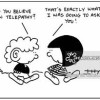“Baxter, introduced two years ago, was designed to be far simpler, safer, and more intuitive to operate than a conventional industrial robot (see “This Robot Could Transform Manufacturing”). Traditional industrial robots are expensive to install and use, and must be separated from human workers for safety. To function properly they typically require that their environments be highly structured and unchanging.
Rethink says sales of Baxter, which costs $25,000, and is only available to manufacturers in the U.S., have only reached “several hundred.” This limited success, and the effort to develop Sawyer, suggest that Rethink may have misjudged the opportunity that comes with balancing simplicity and safety with accuracy and speed…” full story in MIT Technology Review









